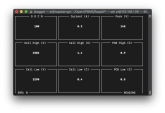t3chN0Mad
New Member
- Joined
- Dec 4, 2019
- Messages
- 22
Hey all, first post but I've been lurking about on here and watching lots of Will's videos for a bit. I was able to find a Valance U27-XP locally and decided to try it out. I made up an RS485 cable and downloaded the software and was able to communicate with the battery. I am working on making my own BMS and thought about just getting rid of the onboard communication and hooking up directly to the temp sensors and cell voltage leads. After I got the back off and saw how nice of a job they did with everything, I was hesitant to start chopping wires. So, I started snooping on the RS485 communication and I've figured out it is using the MODBUS protocol at 9600 baud, 1 stop bit, but I couldn't get it to respond to any commands to poll the registers(command 3?) without having the diagnostic software connected. I also get parity errors on what appears to be the commands coming from the diagnostic software. If I have that running and send commands at the same time, then I can get a response. I did some more snooping and found some commands where the diagnostic software is using mark parity, so I think that could be the hang up. Does anyone have any knowledge of MODBUS and any MODBUS programming libraries that would allow me to configure a connection for mark parity?




